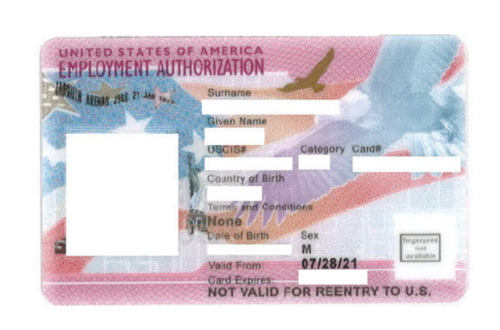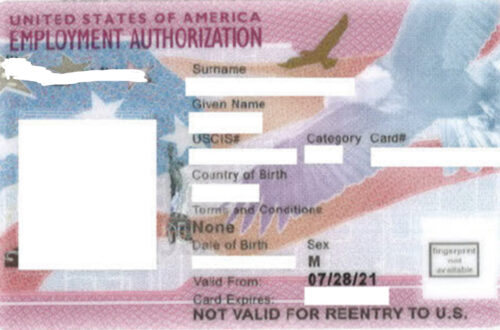
What You Need to Know About the Differences Between Adjustment of Status and Consular Processing
If you want to become a lawful permanent resident (aka LPR or green card holder), you will either do it through adjustment of status or consular processing. The way you choose depends on where you are when a visa becomes available, your preferences, and your circumstances.
If you are already living in the United States, you can become a lawful permanent resident without leaving the country by applying for adjustment of status.
If you are outside of the United States, you can use consular processing to be admitted as a lawful permanent resident.
A question I get asked often is if a person can travel to the U.S. on a tourist visa (B-1/B-2) visa while an immigrant petition is pending (i.e., a U.S. citizen has filed for her spouse who lives abroad, and the spouse will go through a U.S. consulate/embassy to receive the immigrant visa to enter the U.S. as an LPR). If this spouse already has a tourist in his passport, it may be possible. However, if the customs officer asks the reason for the visit, the person must be honest in ALL answers to the questions. If the customs officer determines that he does not want to let your spouse enter the U.S. based on the pending immigrant petition, he can deny entry. If your spouse does not have a tourist visa yet but goes to apply for one while the immigrant petition is pending, again, your spouse must be honest in ALL answers. In this scenario, the tourist visa would likely be difficult to get. The short answer is to travel at your own risk and be honest with all your answers to the officers. There is always a risk of being denied entry.
Adjustment of Status
If you are in the U.S. and will be applying for LPR status (aka green card), you may file to adjust your status to that of an LPR. USCIS would handle your adjustment of status case.
To adjust your immigrant status, you need to follow the steps below:
- Residing lawfully in the U.S. or entered the U.S. legally. This means you are in valid legal status and/or you were inspected and admitted by an immigration officer when you entered the U.S. If you are an immediate relative of a U.S. citizen, a battered spouse or child, or a special immigrant, you may be eligible even if you are no longer in legal status but entered the U.S. lawfully.
- Meet all the eligibility requirements for a green card.
- File all the appropriate forms.
- Visa needs to be available. Visas are always available for immediate relatives (spouses of U.S. citizens, parents of U.S. citizen, children under 21 and unmarried of U.S. citizens). If you are not an immediate relative, it will likely take longer to obtain a visa using adjustment of status.
Leaving the Country While Your Application is Pending
Make sure you do not leave the country after applying for adjustment of status without an advance parole document. You may obtain an advance parole document by filing Form I-131, Application for Travel Document. It is simplest to file at the same time you file your I-485, but you can do so any time after as well. You do not have to pay a filing fee for Form I-131.
If you do leave the U.S. without an advance parole document, you may not be able to reenter the country. USCIS treats you as having abandoned your green card application. Thus, it is critical to obtain the document before you leave the country.
Factors Affecting USCIS’ Decision
Several factors can harm your chances to adjust status. The most prominent factors include fraud or misrepresentation in your application, the commission of crimes, and unlawful presence in the United States. If any of these factors apply to you, make sure you know if you are eligible, and if you have any doubt, you should speak to an immigration attorney.
Consular Processing
Consular processing shares some of the same steps associated with the adjustment of status. The initial immigrant petition would have to be filed with USCIS. However, once the immigrant petition is approved, the Department of State’s National Visa Center (NVC), not USCIS, gets involved. USCIS forwards the approved petition file to the NVC. The NVC will tell you when they have received the petition and when a visa is about to be available. There are certain documents that you must send to the NVC. Once the NVC has received all the documents, they will also be responsible for scheduling the interview at the U.S. consulate/embassy abroad where the consular officer will decide whether you are eligible for a visa.
If you obtain an immigrant visa, the consular office will give you a visa packet. A visa packet contains information for U.S. Customs and Border Protection. You must not open this packet. Bring it with you when you come to the United States, and before you leave for the United States, you should pay the USCIS Immigrant Fee of $220. You must pay this fee so you can get your green card.
You have six months to enter the United States once you are granted an immigrant visa. If you do not enter the U.S. within six months, you will need a replacement visa. The consular office will issue a replacement only in some instances, so make sure you enter the country as soon as possible.
Once you are in the United States, you will give your visa packet to the U.S. Customs and Border Protection officer. After her inspection, you will enter the U.S. and receive your green card in the mail assuming you have paid the immigrant fee mentioned above.
Switching Your Path for Immigration
If you change your mind and want to switch from adjustment of status to consular processing or vice versa, you can do so by filing the forms necessary for each. A switch from consular processing to adjustment of status and vice versa will likely affect the processing times, and you would have to pay an additional filing fee.
| Adjustment of Status | Consular Processing | |
| Location During Process | Inside the U.S. | Outside the U.S |
| Administrative Agency | USCIS | USCIS, National Visa Center, and U.S. consulate/embassy abroad |
| Interview Required | Not always | Yes |
| Processing Time – these times are estimates and can change at any time without notice. | 9 – 36 months depending on the location the case will be processing | 10 – 16 months |
| Medical Exam | Yes | Yes, by a doctor in the home country |





One Comment
Pingback: